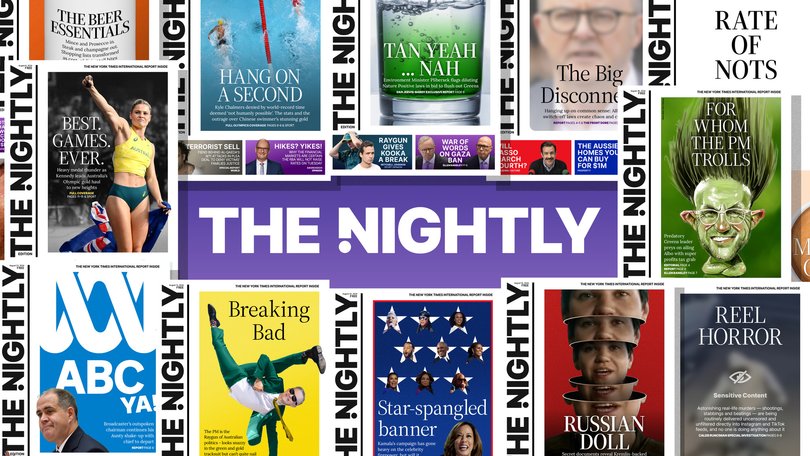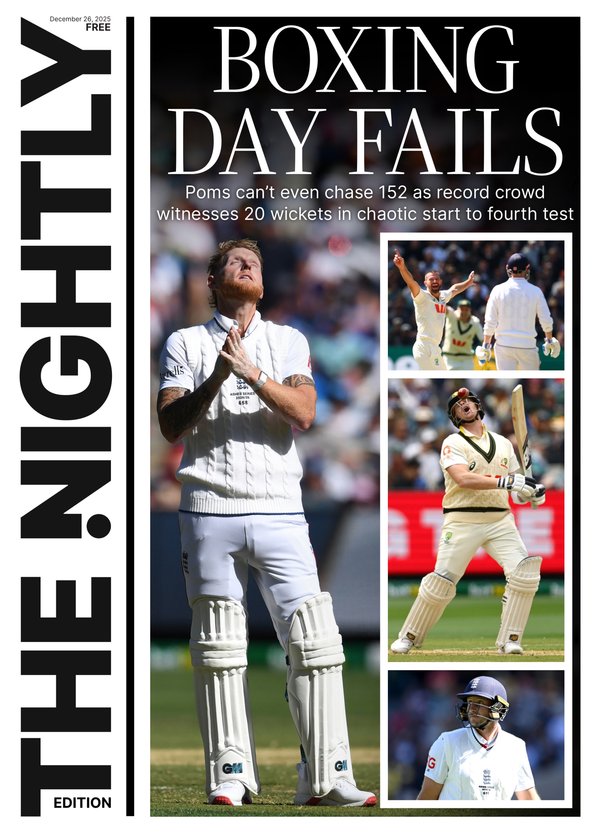The Nightly’s audience numbers hit new heights with industry-audited IPSOS iris figures for August

The Nightly, Australia’s only digital evening newspaper, keeps smashing new milestones, with a surge of readers in NSW driving the audience for the new site to yet another high.
The industry-audited IPSOS iris figures for August show that The Nightly reached a unique audience of 2.84 million Aussies, attracting an additional 227,000 readers compared to the previous month, an increase of 8.7 per cent.
After six full months since launch, The Nightly now sits just below The Australian on the news website rankings, and several places higher than The Australian Financial Review.
Sign up to The Nightly's newsletters.
Get the first look at the digital newspaper, curated daily stories and breaking headlines delivered to your inbox.
By continuing you agree to our Terms and Privacy Policy.The figures reveal the largest audience for The Nightly lives in NSW and Canberra, with more than 31 per cent of its readers, followed by Victoria, which has more than 20 per cent. The data shows more than 70 per cent of The Nightly’s audience resides along the east coast. Just over 20 per cent of The Nightly’s audience is in WA, the home base of its publisher, WAN, which is owned by Seven West Media.
In WA, where The West Australian is the No.1 news site, The Nightly has almost 200,000 more readers than Nine’s local site, WA Today. It also has more than 200,000 more readers than both The Australian and The Australian Financial Review.
The IPSOS iris figures also showed a double-digit increase in page views for the month of August, with 7.4 million recorded for the month — a 12 per cent increase on July’s numbers.
The Nightly continues to resonate with female readers — who make up 52 per cent of its audience — and younger ones, with 55 per cent of its audience between the ages of 25 and 54.
The inaugural editor of The Nightly, Sarah-Jane Tasker, said readers were attracted to the news site because it was built on strong journalism, robust opinions and beautiful design.
“It is also unique, that nightly curated and captivated digital newspaper is like nothing else in the market.”
“Readers are growing increasingly loyal to the nightly news drop. It sets the agenda, publishing front pages hours before other newspapers land around the country. It gives readers a clear picture of the day and an insight into the days ahead.”
Apart from the digital edition each night, The Nightly’s team is also super quick in reaching out to readers with the latest news notifications, email alerts and updates.
The Nightly draws on some of the best journalists in the country, including reporters from 7NEWS, the WAN newspapers, as well as agenda-setting commentators and analysts, such as Aaron Patrick, Latika M Bourke, Cameron Milner, Jeni O’Dowd, Andrew Carswell and the nation’s most feared and respected art critic John McDonald.
Uniquely, The Nightly’s international coverage is exceptional, featuring stories and columns from The New York Times, The Economist, The Washington Post, CNBC and London’s Daily Mail newspaper.
The Nightly is a unique offering in the Australian media landscape — a return to the days of the evening newspaper but in digital form.
Tasker said The Nightly’s meteoric rise was proof that Australia’s mainstream middle was crying out for a voice that could cut through the cacophony of white noise and fake news online.
“The Nightly may only be six months old but it feels like we’ve been an established voice in the media landscape for much longer,” she said.
“The Nightly doesn’t push the same tired agendas as older media players. It is bold, brash and unapologetically honest.”

